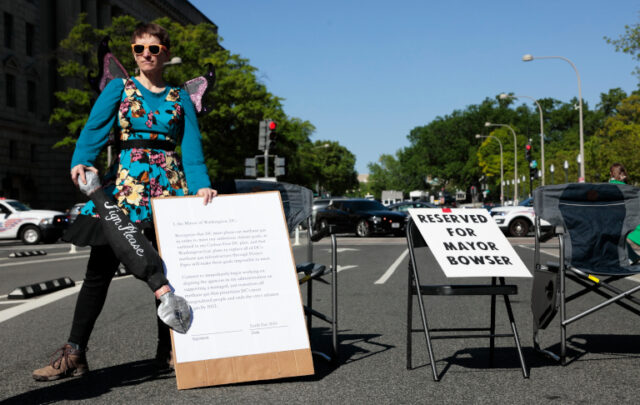A New Executive Order: 2 for 1
The week promises to see two important actions impacting federal environmental regulation. Continuing to churn out executive orders, President Trump signed the long-promised order requiring federal agencies to eliminate two regulations for every one proposed—starting in 2017.
The order is nearly the same as the “regulatory cut-go requirement” in section 808 of H.R. 26—otherwise known as the REINS Act. Having passed the House, the proposed legislation is in the Senate awaiting action.
The presidential order directs agencies begin following the 2 for 1 rule immediately. Trump boasted during the signing ceremony:
This will be the largest ever cut by far in terms of regulations… If you have a regulation you want…we’re not going to approve it because it’s already been approved probably in 17 different forms. But if we do, the only way you have a chance is…to knock out two regulations for every new regulation.
The order is not without its problems—possibly a lot of them. Experts are questioning both its constitutionality and mechanics.
The Administration’s purpose in issuing the order is to reduce the total number of federal regulations by 75 or more percent. It is also intended to keep the total cost of federal regulations down—requiring the two regulations recanted at least equal in cost to the one proposed.
Section 2 (c) states: In furtherance of the requirement of subsection (a) of this section, any new incremental costs associated with new regulations shall, to the extent permitted by law, be offset by the elimination of existing costs associated with at least two prior regulations. Any agency eliminating existing costs associated with prior regulations under this subsection shall do so in accordance with the Administrative Procedure Act and other applicable law.
Offsetting the cost of a new regulations, through the elimination of existing ones, is ultimately going to run into trouble simply as a matter of mathematics. For example, the rule to limit methane emissions from new oil and gas operations put into effect last May was estimated to cost $530 million in 2025. This was against an estimated $690 million in projected benefits during the same period.
Had this rule been issued after today’s executive order, the required offsets could be hard to find—without jeopardizing the loss of other important regulations. The order does not say whether the cost of a regulation is “net” or “gross.” Neither does it indicate where the rules to be cut are to come from.
What if an agency doesn’t have rules under its jurisdiction that would equal the cost of the new one? Would the Energy Department have to ask Health and Human Services if it would mind retracting a few of its regs so that new truck mileage requirements could be issued?
The order directs the head of OMB to annually provide agencies with a cost allowance for new regulations. Agencies will not be permitted to exceed their incremental allotments. Even assuming that an agency can identify enough rules to cut, what happens if those rules were mandated in legislation? Congress would have to act to rescind.
If they were mandated, and came under the Administrative Procedures Act’s requirement that a major rule can only be undone by the same process—in reverse—that created them? Many major rules, e.g. the methane rule or the CPP, took years to finalize.
It is difficult to conceive of how OMB is going to be even able to carry out the President’s directive of coming up with the required agency allowances, either for this or the next fiscal year. Practically speaking there is a lot to consider, e.g. legally mandated or government or agency wide. Does that mean that NO regulations can be issued by agencies, until the details are worked out?
The order is unclear as to when the two existing rules are to be rescinded, i.e. before or a period after the new rule is to take effect. Exceptions to the 2 for 1 rule are made for regulations dealing with the military and national security.
Many– on both sides of the aisle and on all sides of the business, environmental, energy transportation, health, and consumer sectors–are raising substantive questions about the President’s action. Wondering if, in the short-run, it will harm the very businesses Trump hoped to help by introducing a massive amount of uncertainty into the marketplace.
Added to the logistical problems of putting the order in-place, numerous lawsuits are likely to be filed either in advance of agency actions or, as new regulations are issued and existing ones slated for rescission.
Finally, the new executive order is likely to be raised at the remaining confirmation hearings and reflected in the written questions of cabinet and sub-cabinet nominees.
House Joint Resolution 22: Methane emissions on federal lands
The House is expected to rescind a recently published environmental regulation limiting methane emissions. The Resolution would have the immediate impact of striking the Department of Interior/Bureau of Land Management recently published methane regulation. (DOI/BLM)
The rule restricts venting and flaring of existing and future natural gas and methane from wells on federal and American Indian lands. The resolution is scheduled for an up or down vote on January 30th, after the allowed 1 hour of debate. By statute, no amendments or filibuster is permitted for actions brought under the CRA.
The resolution should easily pass the House, when it will then go to the Senate for consideration. Odds are in favor of approval by the upper chamber. Once passed by a simple majority of the House and Senate, it will be forwarded to President Trump for his anticipated signature.
The full text of the disapproval action is:
Resolved by the Senate and House of Representatives of the United States of America in Congress assembled, That Congress disapproves the rule submitted by the Environmental Protection Agency relating to “Oil and Natural Gas Sector: Emission Standards for New, Reconstructed, and Modified Sources” (published at 81 Fed. Reg. 35824 (June 3, 2016), and such rule shall have no force of effect.
The rule was allowed to go forward after a federal court refused to grant petitioners request for injunctive relief. The basis for the challenge was the regulation’s interference with state fracking regulations and a federal agency having exceeding its authority. Similar claims by many of the same plaintiffs that challenged the Clean Power Plan in the West Virginia v EPA case now pending an en ban decision by the D.C. District Court of Appeals.
Unlike EPA’s final rule published in May 2016, applying to all newly drilled wells around the country, BLM’s more narrow rule was finalized after the June 13, 2106 date determined by the Congressional Research Service as within the CRA’s 60 (legislative) days window.
Not directly dealt with by the resolution, methane rules finalized before the date—now under judicial review—may be impacted as the courts search for legislative intent. It should be noted that the challenge to EPA’s methane rule for new and modified oil and gas rules includes the states of Oklahoma and Texas, as well as West Virginia.
The case was filed on behalf of Oklahoma by Scott Pruitt. How his involvement will be dealt with should he be confirmed as EPA Administrator remains an unanswered question.






